Study Abroad in South Korea: Transportation Guide
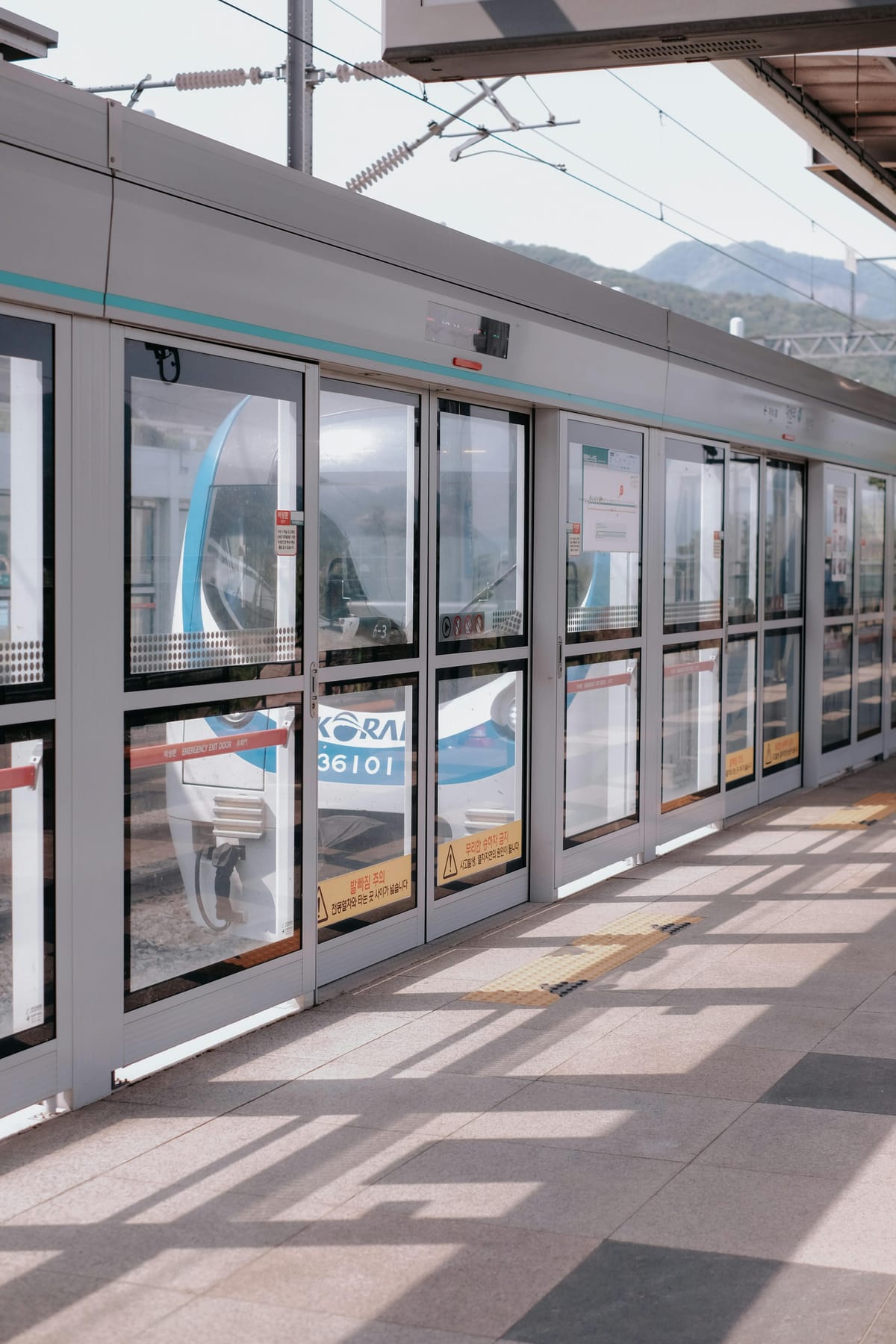
Compared to the United States, getting around without owning a car is very easy in South Korea. Probably in part due to the size of South Korea, but South Korea is light years ahead of the United States in terms of public transit. From taxis to subways to buses to trains, you will not need to rely on having a car to drive in most places you'd want to visit in South Korea (excluding some more rural areas or national parks). And ways to navigate these public transit systems are becoming more and more accessible to foreigners with new English-language apps and ways to pay with foreign cards, but do be aware of the limitations of various apps as some still are in Korean and require a Korean card to pay for these services.
Apps to download:
- Kakao Taxi or k.ride (Note: k.ride is more foreigner friendly and accepts foreign cards.)
- Kakao Maps or Naver Maps (Do not use Google. Most features will not work very well.)
- Tips for using:
- Always enter the address in Korean. They won't always recognize the address in English.
- Ex: 서울 서대문구 이화여대길 76 2층
- Always enter the address in Korean. They won't always recognize the address in English.
- Tips for using:
Transit Cards: Types
- T-Money: You can get this in convenience stores and subway stations. Would recommend this card over Cashbee as it is more widely used
- Cashbee: Similar to T-Money, but you can only get these in stores. The Yonsei University Student ID uses Cashbee
- Student ID: Your student ID most likely has a transit card function. Can only reload at subway stations
- Wow Pass: Geared more towards tourist. Is a prepaid debit card and T-Money combo card.
Where to get and reload your transit card:
There are a variety of ways to get a transit card, but here are some of the most common ways. Reloading your transit card is much more limited, as you will need cash to reload most of the time.
- 교통카드 판매 & 충전기 (gyo-tong-ka-deu pan-mae & choong-jeon-gee) T-Money Vending Machine & Charger: You can buy and recharge your card at machines in the subway stations. Just click on the reloading card button, put your card on the card reader below, select how much you want to add, and then insert the exact amount. You can only buy/reload using cash at these machines. Silver machines are single-ride ticket and card reload machine only, while the blue machine is a T-Money dispensing machine and card reloading machine. Not every subway station will have a blue machine.
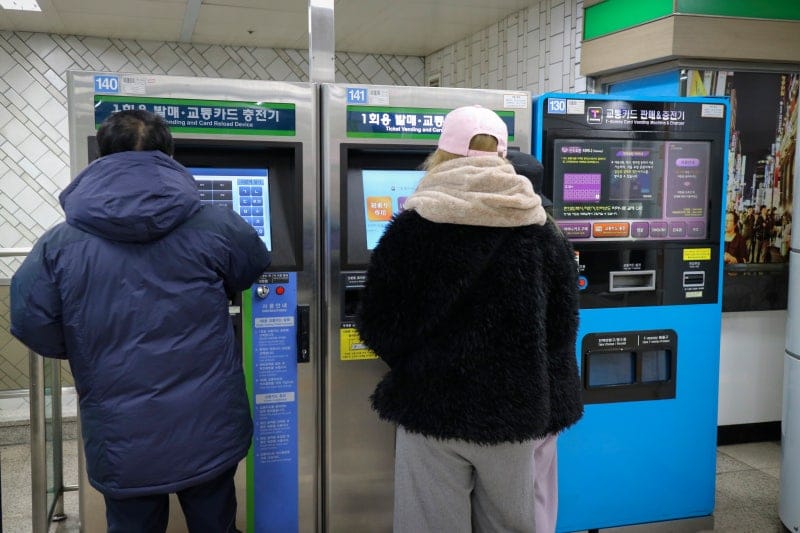
- 편의점 (pyeon-ee-jeom) Convenience Store: You can buy and reload your T-Money and/or Cashbee card at any convenience store with a T-Money or Cashbee Symbol outside. This method will require some Korean language skills as you will need to ask the cashier if they have any cards behind the counter and to reload your card. You might be able to pay using your credit card, but I would bring cash just in case.
- 아트박스 (ah-teu-bak-seu) Artbox: You can often buy T-Money cards at Artbox, a popular stationery store with many locations around the country. They are often at the checkout counter, but I'm pretty sure you can't reload them at the store.
Buses: Types
- Green (지선버스): Short routes within the city that connects the neighborhoods to the subway stations. Probably the bus you'll take most often (Fare: ₩1,200*)
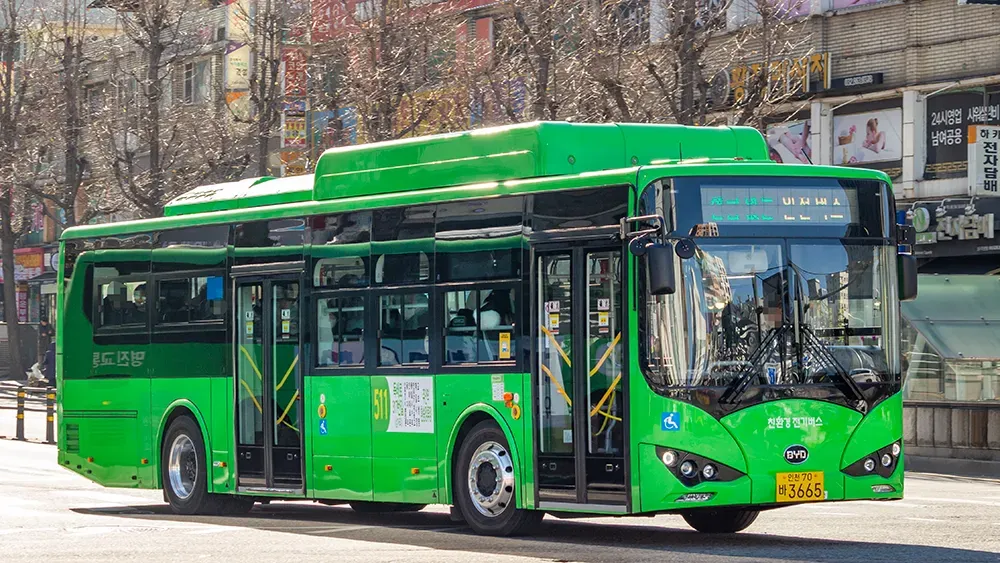
- Blue (간선버스): Similar to green buses, but they have longer routes (Fare: ₩1,200*)
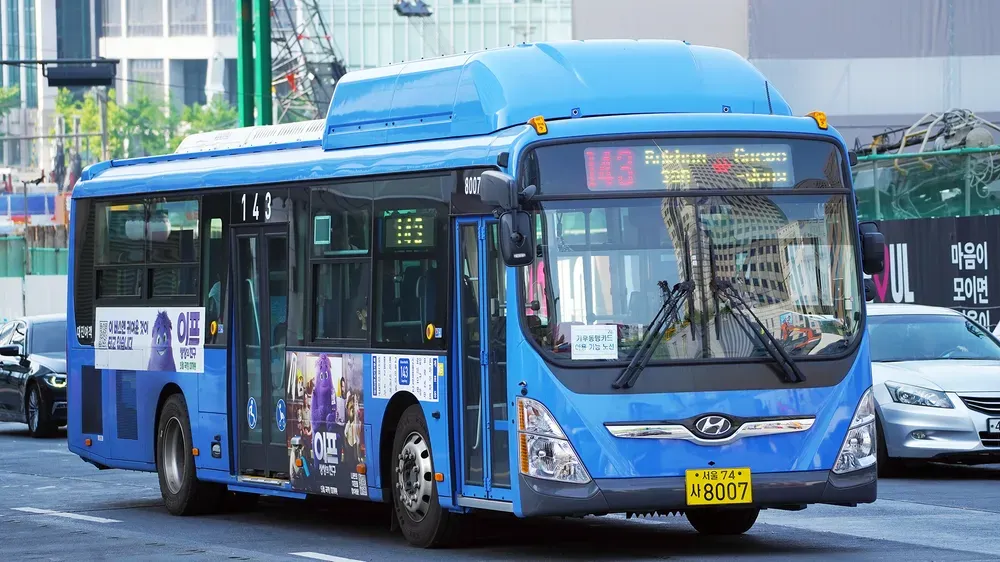
- Red (광역버스): Have very long routes that go outside of the city. Similar to layout to a limousine bus (Fare: ₩2,300*)
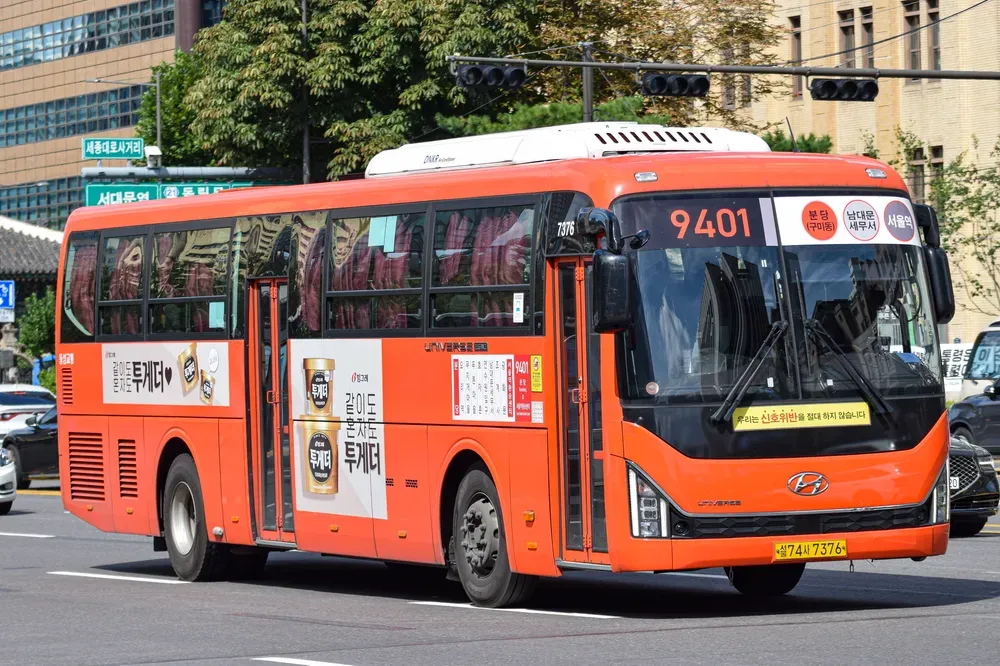
*Fare if paying with a transit card and subject to change
Bus: How to pay
You can either pay with cash (will be a little more expensive) or with a transit card. When you enter at the front of the bus there will be a box to put change, and then a machine where you can tap your transit card. When leaving the bus at the back, make sure to tap this machine at the back doors too so you don't get charged more, especially do this when you're transferring to the subway.
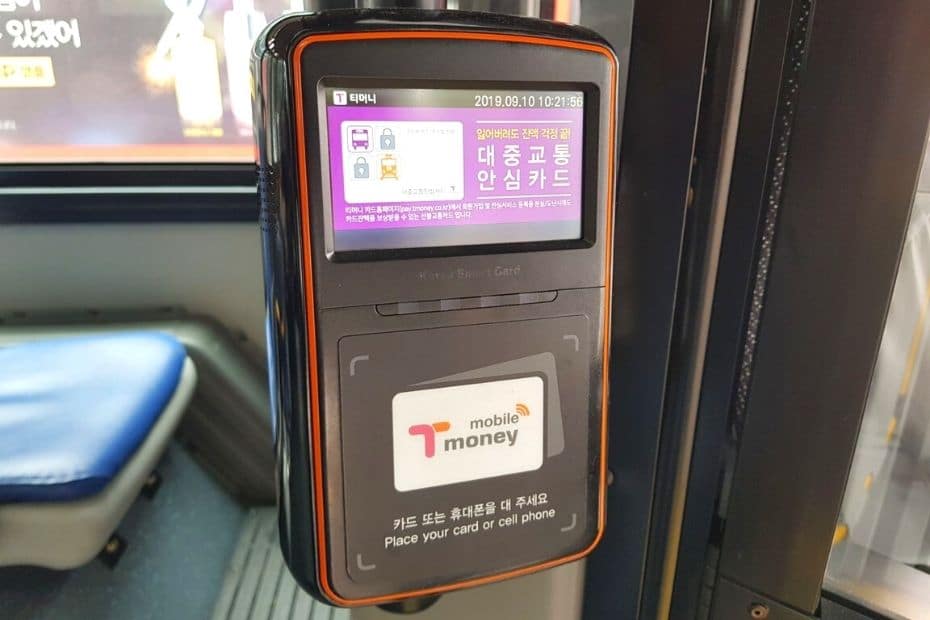
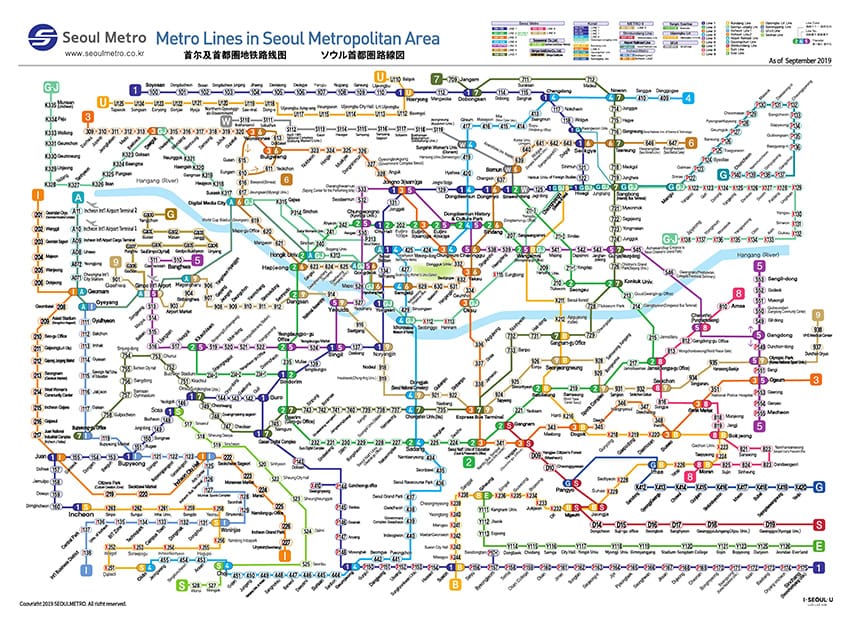
Subways: How to pay
Enter a turnstile with a green arrow, place your transit card on the card reader (it will usually say 'place your card here'), and enter through the turnstile (you might need to push through or doors might automatically open depending on the station). Once you tap, the machine will tell you how much you have left on your card. When leaving the station, do the same thing.
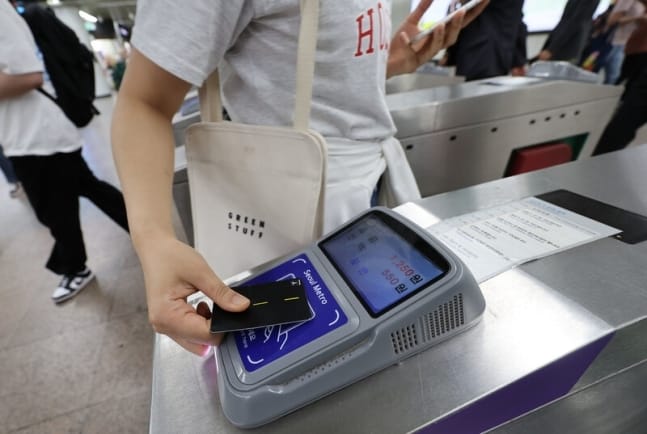
Subway: Tips for riding for the first time
- Know the station name: To make sure you're going in the right direction, know the name of the station you're going to and some other stations along the same route. Signs in the subway might only list the major stations along the route, so it's good to know some of them so you don't end up getting on the train in the wrong direction
- Know which exit you need: When exiting the station, make sure to look on your maps app to see which exit you should take, and then look out for signs towards that exit
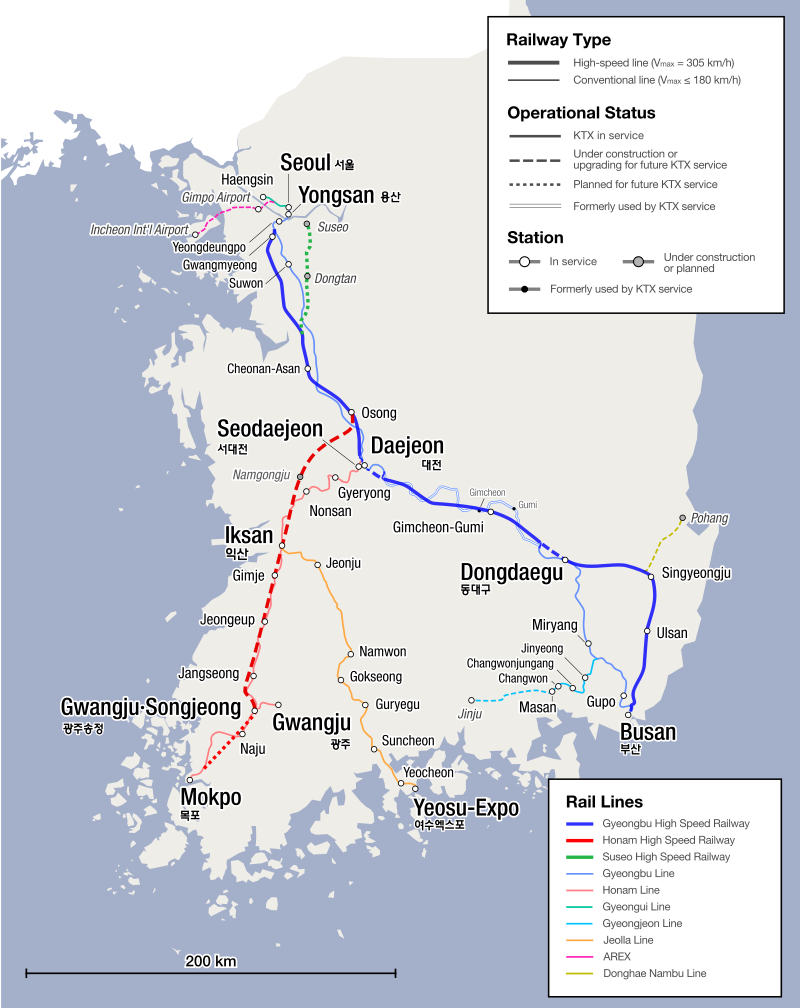
KTX: How to get tickets
- At the station: The station will have a ticket counter and/or ticket machine. You can purchase a ticket for the same day or for a future date. You can pay with card or cash at the station. Although, some of the machines at the station might only take Korean cards. The machine will tell you what kind of card it accepts on a sign above the machine.
- Online: Rail Ninja is an easy website to buy KTX tickets for foreigners, although it can cost more than at the station. It also works for buying train tickets in other countries like Japan. Lets Korail is an alternative for purchasing KTX tickets, although the website sometimes has difficulties accepting foreign cards. Another alternative is Trip.com, which allows you to buy train tickets in South Korea, the UK, China, Hong Kong, and Europe. Out of all three of these, I would recommend Trip.Com as the booking fees are cheaper than Rail Ninja, it easily accepts foreign cards, you can earn points to get discounts on future trips, and you can easily get a refund if needed.
KTX: Tips for riding the train
- Make sure to show up to the platform early as these trains are very punctual
- Most of the time no one will check your ticket when you're on the train as long as you are in the right car and seat
- There are some luggage racks on the side of the car that can hold larger luggage, if these are full there are overhead racks that will hold smaller luggage
- Check signs in station for which platform your train is on. This is usually on a screen at the entrance to the platform(s)
- Unlike Amtrak in the United States, KTX does not offer checked baggage service. It is up to you to bring your luggage onto the train yourself, so bringing a lot of luggage with you is not recommended. Although at some train stations there is a delivery service where you can have your luggage ship to your destination and it arrives on the same day. Click here for more information on that service. Do be aware that although the website does have an English language function it's not very good, so it's definitely more accessible if you know Korean or know someone who does.